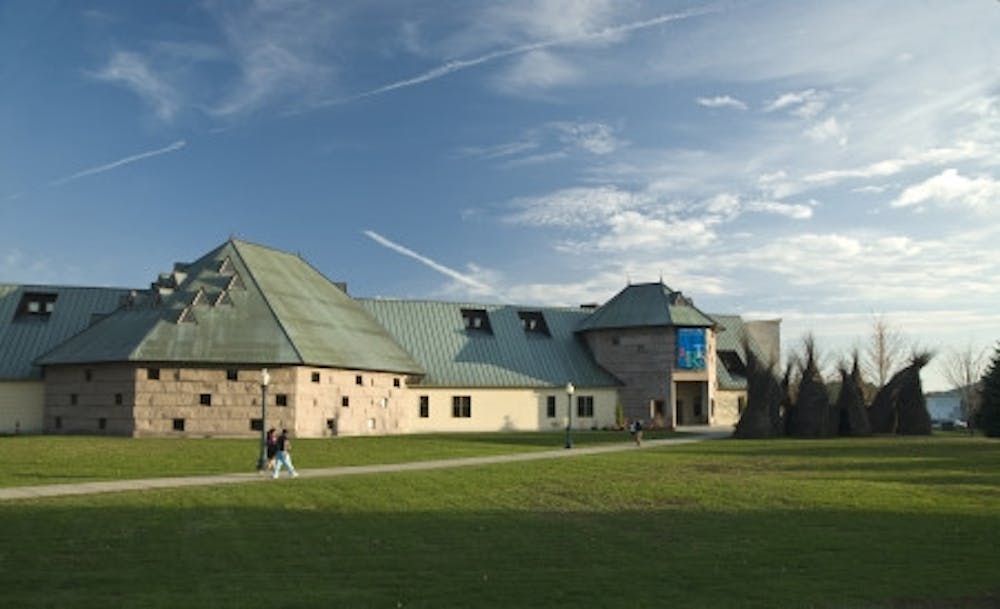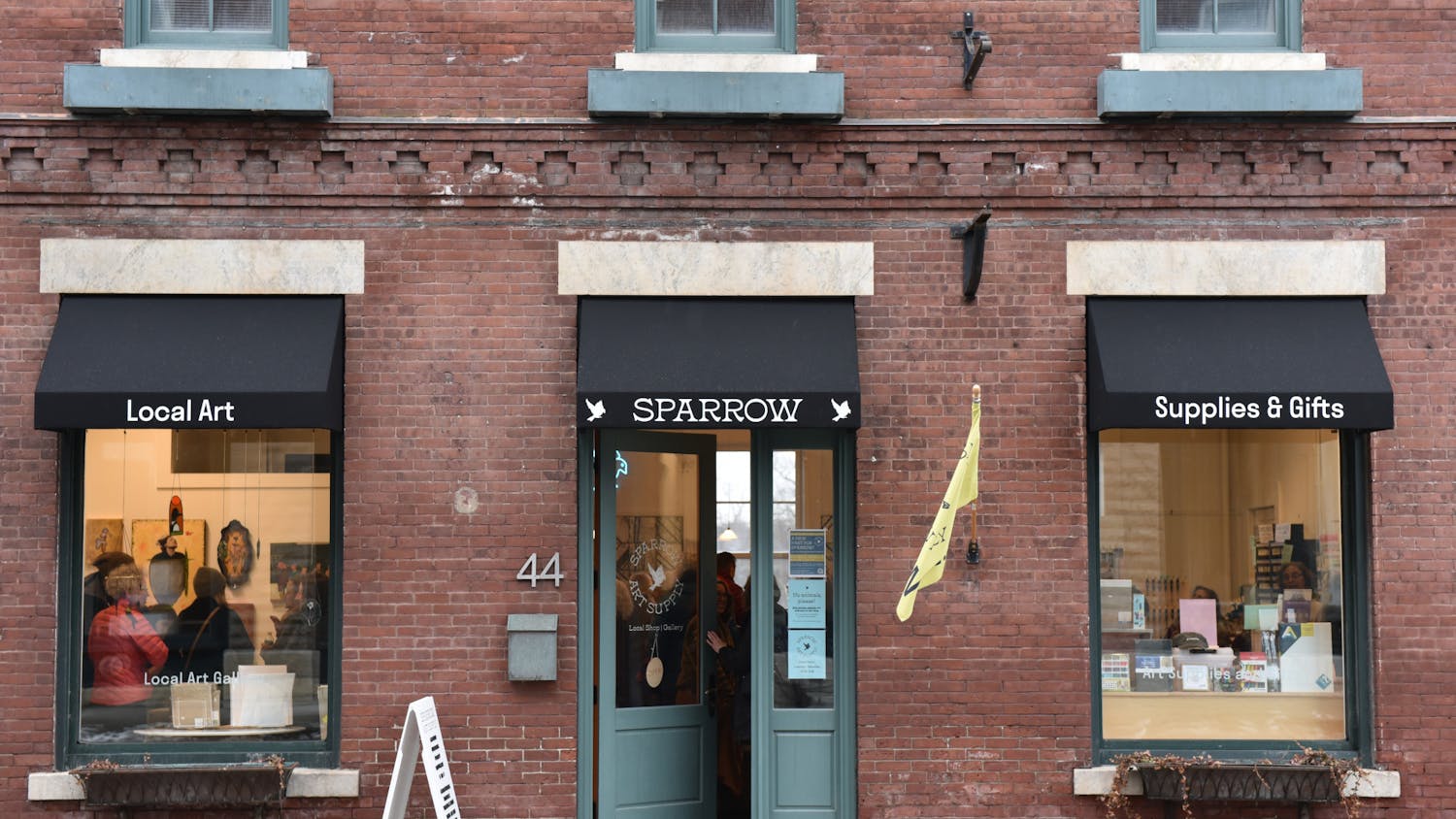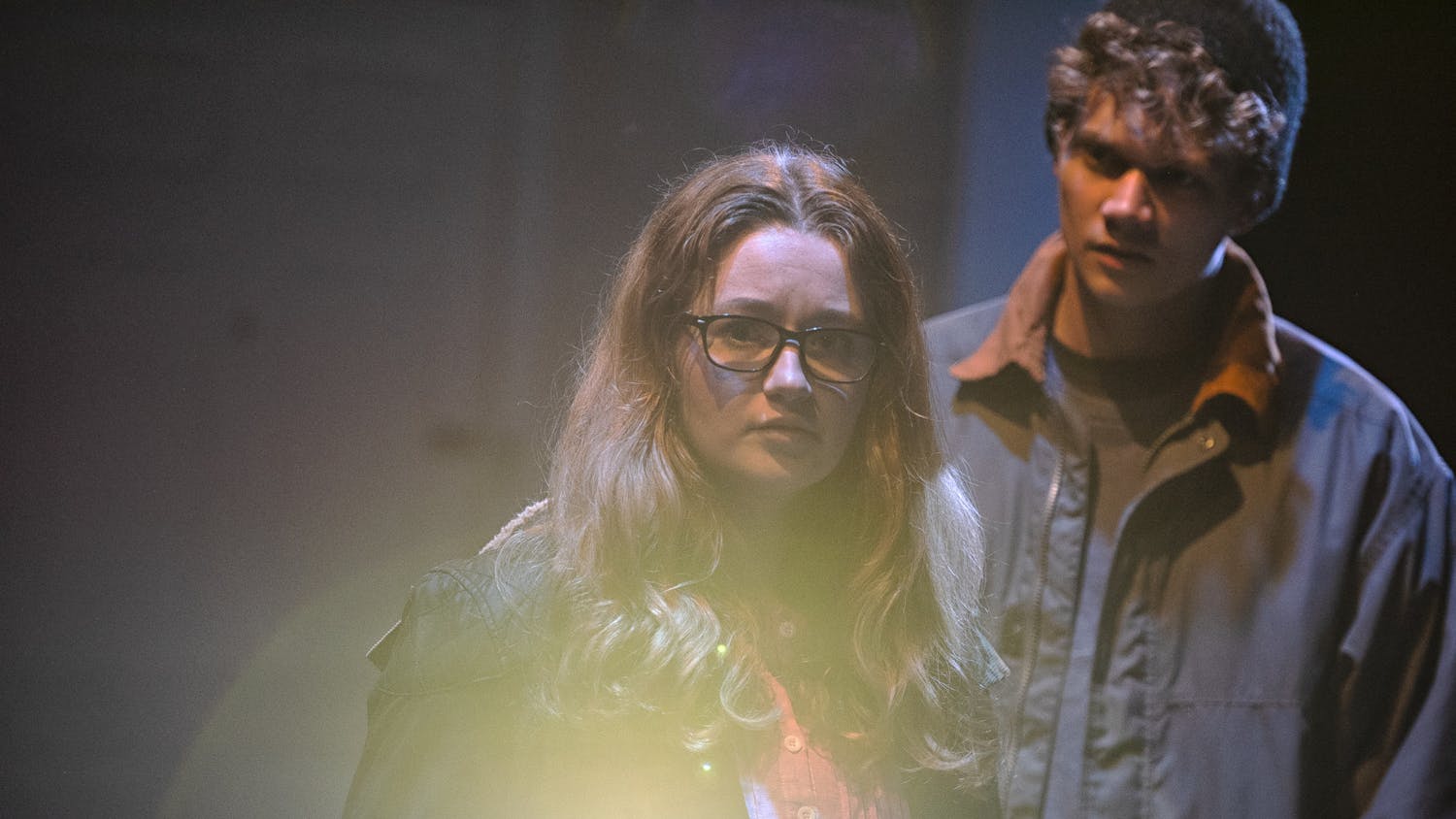Over the past couple weeks, the brutal conditions of the slowly receding winter have caused leaks to occur at the Kevin P. Mahaney ’84 Center for the Arts (MCA), which has played an integral role on campus since its construction in 1992. The affected area is located above the Middlebury College Museum of Art, where ice has pierced holes in the roof, allowing melted snow to leak into the building. Additionally, snow has blown into the ventilation ducts and melted, further contributing to the structural issues.
The timing of the leaks is not entirely unexpected. Generally, most roof leaks occur as springtime approaches, when rising temperatures cause heavy snow loads on top of buildings to melt. Meanwhile, the prolonged period of icy cold weather in January and February was accompanied by very few leaks.
The Facilities Services staff works strategically to combat the uniquely difficult conditions that Vermont winters present.
“Much of our attention focused on snow removal and thawing frozen drain lines. To the extent possible, we proactively remove snow from roofs that are more problematic,” Luther Tenny, Assistant Director of Maintenance & Operations at Facilities Services Office, said. “Let’s just say we’re all happy to be done with February.”
The inconvenient nature of the leakage, which has not gone unnoticed by students and faculty who frequent the MCA, is further exacerbated by the lingering winter conditions.
“Trying to find a pinhole leak under four feet of drifted snow and ice can be a frustrating task,” Tenny said.
Unfortunately, the complicated roof system of the MCA – composed largely of a protruding wigwam pattern, a patchwork style and sloping angles – is prone to trap large amounts of snow. This is similar to Le Chateau, which also faces obstacles due to the complexity of its roof design. Both buildings tend to pose more problems for the facilities staff than other structures on campus.
Structural problems vary according to the architecture of each building. Flat roofs with drains can freeze up and cause water to back up, namely at Freeman International Center and McCardell Bicentennial Hall. Additionally, ice dams are apt to form atop roofs with poor insulation, creating further leaks.
Due to the harsh, frigid conditions of each winter, facilities services have enacted numerous repairs and upgrades to the College’s roofing systems over the years – though admittedly, some problems are simpler to correct than others.
MCA is not the only building that has been internally affected by structural issues. The roof of Coffrin Annex, which connects the Annex to the main part of the Coffrin dorms, also experienced leakage at the onset of spring, as pipes on the roof failed to drain melting snow. As soon as facilities removed the snow, however, the problem disappeared.
While prolonged leakage issues may manifest themselves at times, as in the recent case at MCA, the facilities staff works to maintain a high level of efficiency toward the unpredictable brutality of Vermont weather, and its inconvenient aftermaths. As spring creeps ever closer and the College continues to modernize its building structures, such minor issues as the MCA leakage are likely to arise less frequently.
Extreme Weather Takes Toll on MCA

Comments



